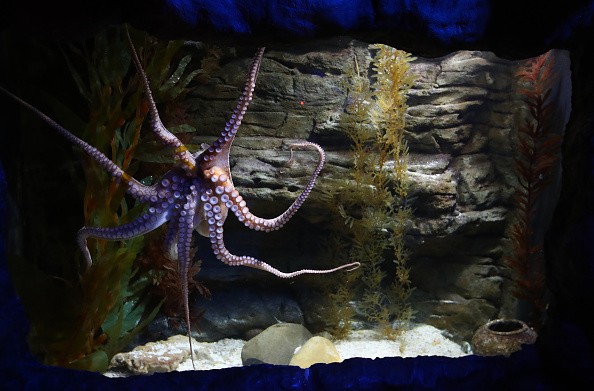When it comes to murdering their prey, all octopi are venomous. Most octopi, however, are not as dangerous to humans as the blue-ringed octopus, which has a diameter of less than an inch.
There are four venomous species of the blue-ringed octopus and it is one of the deadliest sea creatures. The venom of the octopus, according to Ocean Conservancy, is 1000 times more potent than cyanide and is capable of killing up to 26 adult humans.

About Blue-ringed Octopus
The beauty of blue-ringed octopuses is undeniable. These animals are known for their iridescent blue bands that cover their bodies and arms when they feel threatened. Blue-ringed octopuses may be adorable and photogenic, but their toxicity is hidden beneath their cuteness.
Tides and coral reefs in the Pacific Ocean host the blue-ringed octopus, which is found in shallow tidal pools, according to News Break.
They have arms that are 2.7 to 4 inches long and measure 1.5 to 2.3 inches in length. Blue-ringed octopuses, in contrast to other aposematic species such as poison dart frogs and velvet ants, only show their vibrant colors when threatened, according to research.
Under their skin, the octopuses have tens of thousands of chromatophores. It's possible for these cells, which are highly specialized, to change color in an instant.
These cells and iridophores, a specialized type of light-reflecting chromatophore, are used by blue-ringed octopuses to put on a threat display.
Also Read: TikTok User Unaware He's Holding the World's Most Venomous Octopus in Bali!
Venom from the Blue-ringed Octopus
Blue-ringed octopuses don't only put on a show with their menacing displays.
Tetrodotoxin is a substance found in the octopus' venom. Neurotoxic tetrodotoxin can be lethal if ingested. Muscle paralysis, respiratory difficulty, nausea, blindness, and loss of perceptions and motor skills are all caused by the venom's blocking of nerve signals.
Death occurs in a matter of seconds. Only if prompt resuscitation measures are taken is there any chance of recovery.
This tetrodotoxin is produced by symbiotic bacteria in the salivary glands of blue-ringed octopus (TTX). Nerve impulses are effectively stifled by this chemical, which is neurotoxic. Muscles are unable to contract as a result, which can be fatal. TTX is said to be 1,000 times more poisonous than cyanide, according to some reports.
However, the blue-ringed octopus is not aggressive and only bites when it is handled or cornered.

Threats Blue-ringed Octopuses Are Facing
For the time being, experts are unsure of the population status of the blue-ringed octopus. Despite the fact that none of these species are officially listed as threatened, it is possible that human activities have an impact on them.
Among other things, there could have a negative impact on their primary habitats. There are numerous threats to coral reefs, including warming waters, ocean acidification, and pollution. Blue-ring octopuses are known to inhabit coral reefs.
Similarly, the population of seagrasses is on the decline. Animals that rely on these environments are at danger of extinction if their habitats are destroyed.
A third type of octopus, the blue-ringed octopus, is exported globally for aquarium use. Even though portions of their habitat is protected by Marine Protected Locations, these species have been harvested from the wild in areas where there are little restrictions on capturing them. It has been claimed that they have a limited lifespan, lasting only a few years, and that they do not travel well.
Related Article: 5 Most Venomous Animals in the World That Can Kill You in One Strike
For more news, updates about octopi and similar topics don't forget to follow Nature World News!
© 2024 NatureWorldNews.com All rights reserved. Do not reproduce without permission.

![Tsunami Hazard Zones: New US Map Shows Places at Risk of Flooding and Tsunamis Amid Rising Sea Levels [NOAA]](https://1471793142.rsc.cdn77.org/data/thumbs/full/70325/280/157/50/40/tsunami-hazard-zones-new-us-map-shows-places-at-risk-of-flooding-and-tsunamis-amid-rising-sea-levels-noaa.jpg)



